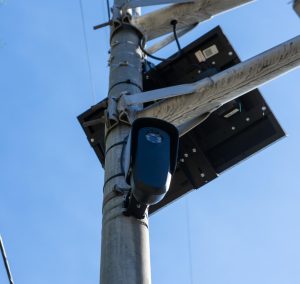Finalized FSR recommends 25 percent increase in financial aid gapping
March 11, 2021
On Wednesday, March 10, President Kathy Murray released the financial sustainability recommendations of the President’s Cabinet. The Cabinet decided not to recommend increasing flexibility in financial aid gapping. This article was written prior to this announcement and references the final recommendations made by the academic program, administrative unit and student support committees.
The final Financial Sustainability Review recommendations identified gapping — the process of offering students less financial aid than their demonstrated need — as an item for budget reduction that would save Whitman $219,000 in Fiscal year 2021 and every year going forward. The proposed item gives the financial aid office more flexibility by eliminating the “hard limit” on how large of a gap they can offer. 80 percent of the Administrative Units Working Group voted in favor of “increasing flexibility in gapping.”
Josh Jensen, VP for Enrollment and Communication and member of Administrative Units Working Group, said that this proposal, along with the other items in the Financial Sustainability Review (FSR), will be reviewed by the President’s Cabinet and then submitted to the Board of Trustees, who will make final decisions by the end of March.
Jensen said that the College uses an institutional formula to estimate an applicant’s expected family contribution (EFC), and that gaps can arise between the EFC and the total budget for attending Whitman College.
“When we’re thinking about a gap in financial aid, what we’re talking about is the difference between what we believe a family can afford for college, and what a family is expected to pay beyond the financial aid package, so the difference between the actual budget and the financial aid package,” Jensen said.
The applicant’s actual budget includes tuition and fees, and additional costs like travel.
Prior to the financial losses caused by the COVID-19 pandemic, Whitman was attempting to phase out gapping. Jensen said that the maximum gap in financial aid was reduced from $6,000 to $4,000 for students entering the College in 2019.
The College reduced gapping to better align with the strategic priorities, which were finalized in 2017 and remain in place for five years. Some of the priorities identified in the 2017 report include “increasing access and affordability [of tuition]” and “enhancing diversity, equity and inclusion.”
With the proposed change in the FSR, the limit would be increased by 25 percent, or $1,000 for individual students. The change would only affect future students.
Students took to social media to protest the increase in gapping. Junior Em Perry said that she posted about gapping on her Instagram story because she already struggles with gaps in her financial aid as a First Generation/Working Class (FGWC) student.
Perry applied to Whitman through the McKinney-Vento Act, a federal law that, among other things, proves to colleges and universities that applicants cannot make any contributions toward their education. Despite this legal certification that she cannot afford to make any contributions, she found that every semester she received a daunting bill.
“When I got my package I was under the assumption, and I believe that I was told by the administration, that all of the money that was my contribution every semester or year was work study, and that was the couple of thousand that I needed to come up with,” Perry said. “But every single semester there was this mystery chunk of a couple thousand dollars that just seemed to not appear in my financial aid package.”
Perry is currently on academic leave, so social media is essential for her to connect with other students. She hopes sharing her stories surrounding financial aid at Whitman will help other students make a more informed decision.
First year Nat Lange said that he first saw the proposed changes to gapping in the FSR on the Instagram story of the podcast Whitman So White. In his role as member of ASWC Sustainability Committee, he co-authored a resolution in response to the proposed changes to gapping. The resolution exhorted the Board of Trustees to reject any increase in financial aid gapping to protect affordability.
The resolution passed unanimously and was part of a set of three passed by ASWC in response to the FSR. These resolutions were the first passed in 18 months.
Lange said that he thought that the increase in gapping would run counter to the diversity, equity and inclusion strategic priorities.
Jensen said that through preferential packaging, the College would continue to offer additional aid to students that match the College’s strategic priorities, like students from underrepresented groups.
Still, for a lot of students the lack of understanding surrounding gapping has caused lots of stress. First year Brandon Martinez is an international student from El Salvador and was already struggling with his financial aid because COVID-19 affected his parents’ finances. Last semester, he decided to only take his first year seminar class in an attempt to save money.
Martinez said that the initial email his parents received about the FSR caused them distress because they do not speak English and were concerned they would need to send him more money. Concerns about his financial aid and the proposed cuts to the programs he is interested in majoring in — politics and psychology — mean that he is considering transferring to another university in the U.S. or in Latin America.
“That’s one of the reason’s I decided to come to Whitman,” Martinez said. “It was the academic offer, plus the financial aid — so if those two things get cut, then for me, there is no reason to be here.”






